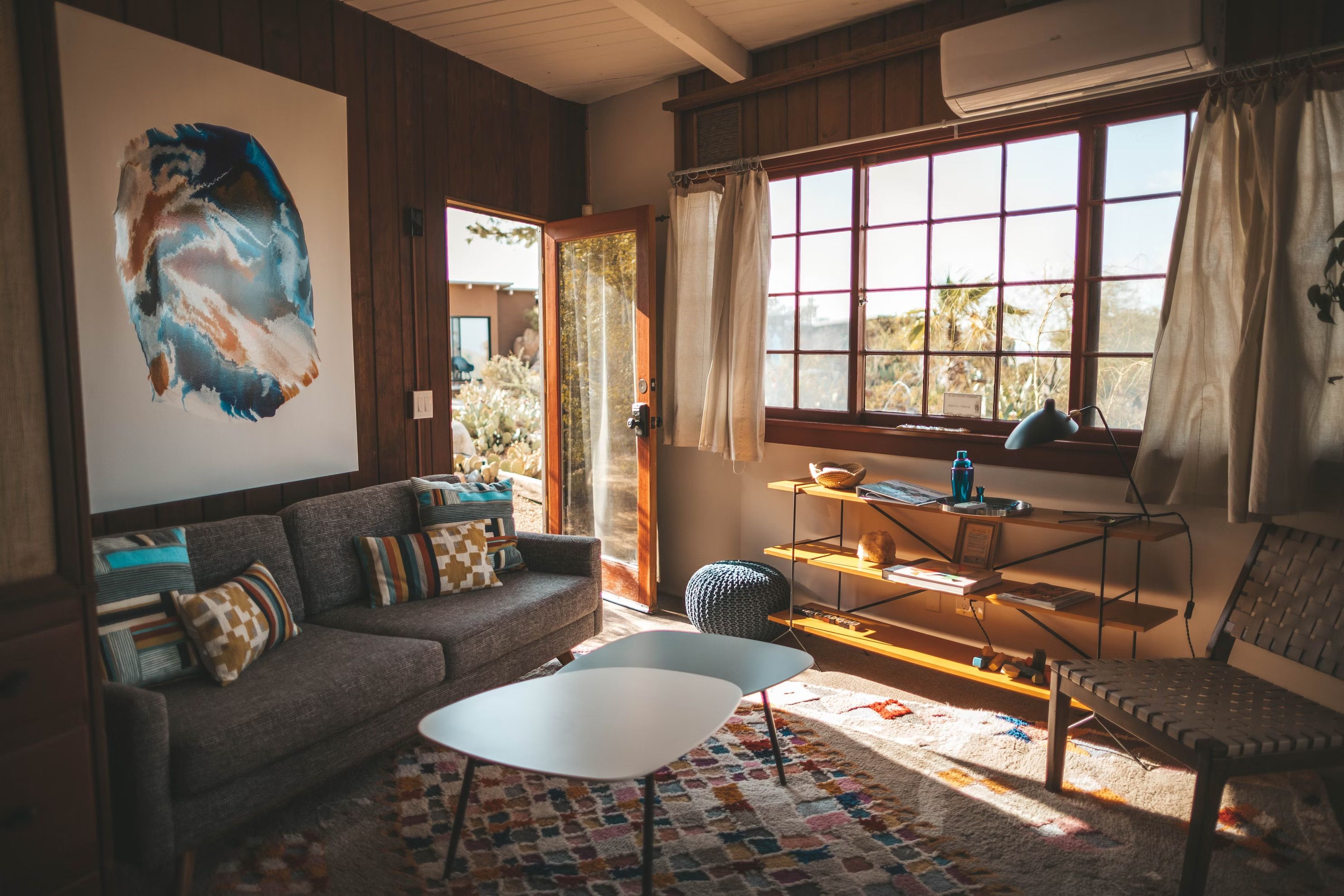Discover Gas Fireplaces & Stoves
Spoken matches gas fireplaces and stoves across 100s of stores to find you the best price.



Quick facts
Can't find the answer you're looking for? Please get in touch with our friendly team.
Do gas log inserts need to be vented?
Yes, most gas log inserts need to be vented to ensure proper airflow and safety. Venting helps to expel harmful gases and provides a more efficient burning process. However, some ventless models are available, which do not require external venting.
Do I need a chimney for a gas insert?
No, you do not need a traditional chimney for a gas insert. Gas inserts typically vent through a direct vent system, which can be installed through an exterior wall. This allows for efficient venting of gases without the need for a full chimney.
How much does it cost to replace a wood-burning fireplace with a gas insert?
Replacing a wood-burning fireplace with a gas insert typically costs between $2,500 and $5,000. This includes the price of the gas insert, installation, and any necessary venting or modifications to the existing structure.
Which is better, gas logs or gas inserts?
Gas inserts are generally better for heating efficiency and safety, as they are designed to fit into existing fireplaces and provide better insulation. Gas logs offer a more traditional look but may not heat as effectively. Choose based on your heating needs and aesthetic preference.
What is the lifespan of a gas fireplace?
A gas fireplace typically has a lifespan of 15 to 25 years, depending on the quality of the unit and how well it is maintained. Regular inspections and servicing can extend its life and ensure safe operation.
When should you not use a gas fireplace?
You should not use a gas fireplace during a gas leak, when the venting system is blocked, or if there are signs of malfunction. Additionally, avoid using it in small, unventilated spaces where carbon monoxide could accumulate, posing safety risks.
What are the most efficient gas fireplaces?
The most efficient gas fireplaces include direct vent models like the Napoleon GD80 and the Valor H6. These units offer high efficiency ratings, often exceeding 80%, and provide excellent heat output while minimizing energy loss. They also feature adjustable flames for better control.
What will replace gas fireplaces?
Electric fireplaces and bioethanol fireplaces are popular alternatives to gas fireplaces. Electric models offer easy installation and a variety of styles, while bioethanol options provide a clean-burning flame without the need for venting. Both options enhance home decor and provide warmth.
What does it cost to replace a gas fireplace?
Replacing a gas fireplace typically costs between $2,500 and $5,000. This includes the price of the new unit, installation, and any necessary modifications to your home. Costs can vary based on the fireplace model and installation complexity.
What are the disadvantages of a gas fireplace?
Gas fireplaces can be less efficient than wood-burning ones, as they may not produce as much heat. They require a gas line and proper ventilation, which can be costly. Additionally, they lack the ambiance and crackling sound of a traditional fire.
What is the most efficient built in fireplace?
The most efficient built-in fireplace is typically a gas fireplace with a high efficiency rating, often above 80%. Models like direct vent gas fireplaces offer excellent heat output and minimal heat loss, making them ideal for modern homes.
What kind of fireplace puts out the most heat?
Wood-burning fireplaces typically produce the most heat, as they burn logs that generate significant warmth. However, high-efficiency gas fireplaces can also provide substantial heat while being cleaner and easier to manage. Consider your space and heating needs when choosing.
Are gas stoves and fireplaces safe?
Gas stoves and fireplaces can be safe when properly installed and maintained. Regular inspections, adequate ventilation, and carbon monoxide detectors are essential. Always follow manufacturer guidelines and local building codes to minimize risks and ensure safe operation in your home.
Can you just replace gas fireplace logs?
Yes, you can replace gas fireplace logs. Ensure you choose logs compatible with your specific fireplace model. Follow the manufacturer's instructions for safe installation, and consider consulting a professional if you're unsure about the process.
Category Overview
Introduction
Gas fireplaces and stoves serve a crucial role in modern homes, transforming ordinary spaces into cozy retreats. They provide warmth on chilly nights, create a relaxing ambiance for gatherings, and enhance the aesthetic appeal of your living areas. Imagine curling up with a book by the flickering flames or sharing laughter with family around the hearth—gas fireplaces and stoves elevate everyday life, making comfort and utility synonymous.
Functionality
The primary function of gas fireplaces and stoves is to provide efficient heating while offering the charm of traditional flames without the hassle of wood. These versatile fixtures can grace various rooms—from the living room where you unwind after a long day to sunrooms that benefit from additional warmth during cooler evenings. Unique features like adjustable flame settings allow you to customize your experience based on mood or weather, adding further utility to these functional pieces.
Design & Style
Gas fireplaces and stoves come in an array of designs and materials that cater to diverse tastes. Common options include sleek metal finishes for a contemporary look or rustic stone that adds character to any space. You’ll find everything from minimalist styles that fit seamlessly into modern decor to farmhouse-inspired designs that bring warmth and charm to your home. Personalization is key; whether you prefer bold colors or subtle hues, there’s a design that can complement your decor theme—be it modern, rustic, or bohemian.
Practical Considerations
When selecting the right gas fireplace or stove for your home, consider factors such as room size and heating capacity. A small unit might suffice for cozy dens or bedrooms, while larger spaces may require more substantial models for adequate warmth. Durability is another critical factor; look for materials resistant to wear and tear if you plan heavy usage versus decorative placement. Avoid common mistakes like underestimating heat output or neglecting clearance requirements—proper planning maximizes functionality without compromising safety.
Comparison and Alternatives
When choosing between materials like cast iron vs. steel for gas stoves, consider their heat retention properties and longevity; cast iron typically offers more durability but may be heavier than steel options which are often easier to install. Similarly, rectangular models can efficiently fit against walls in tighter rooms while round units add visual interest in open spaces—pick based on your room’s layout and style preference.
Trends and Popular Items
Currently trending are sleek linear gas fireplaces that align with minimalistic designs—a favorite among homeowners seeking both style and efficiency. Additionally, multi-functional models featuring integrated shelves have gained popularity as they combine storage utility with aesthetic appeal, catering perfectly to those who want both comfort and practicality in smaller spaces. By carefully considering these aspects when choosing gas fireplaces or stoves, you’ll find the perfect match that enhances not just your home’s warmth but its overall charm as well.